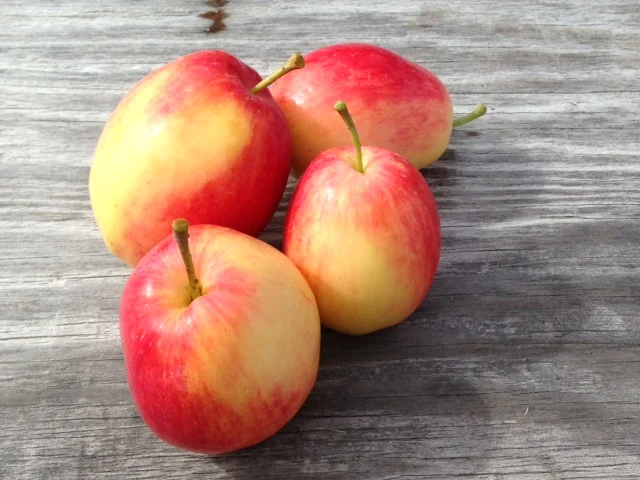
Centennial Crab Apples
These are amazingly sweet and tangy little apples. Our favorite of the early July apples.

Lodi Apple
These early July saucing apples were frequently found on homesteads in the Stayton/Scio area more than 50 years ago. In July you can identify the big old Lodi trees around the countryside by the abundance of pale green fruit littering the ground around the trees. These make the best apple fritters.

Belle de Boskoop
These wonderful apples are great for eating, baking and drying. They also make one of the best hard ciders we’ve ever tasted. They begin to ripe in September and will keep for months. Considered by Belgians to be the only apple for strudel.

Honeycrisp
One of our favorite modern apples. Crisp, sweet, juicy and with just touch of tartness. An apple that easy to love.

Blairmont
An early southern apple that is always pretty and sweet. These are among the nicest of the July fruits.
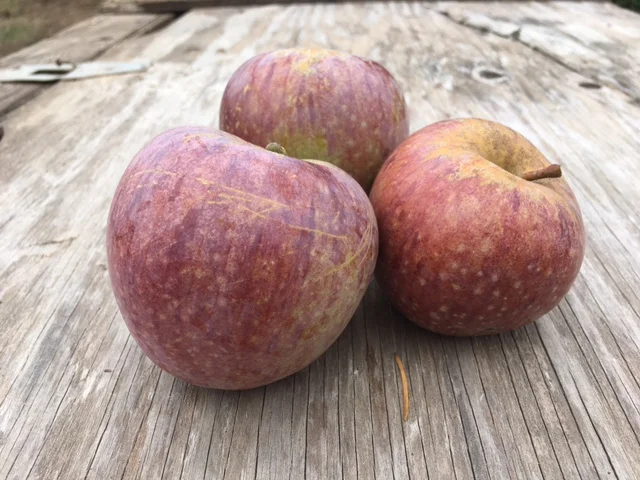
Blue Pearmain
This apple is from 1700s New England. It’s unique not only for its bluish bloom but also for its flavor, which is often described as tropical.

Bramley's Seedling
This classic British cooking apples is still very popular there. That’s for good reason as it is one of the best apples anywhere for pie. It’s also unbeatable for sauce.

Coles Quince Apple
These quine shaped apples have a subtle quince like flavor. They flavor is delicate and they keep well enough that you can display them for weeks before eating them.
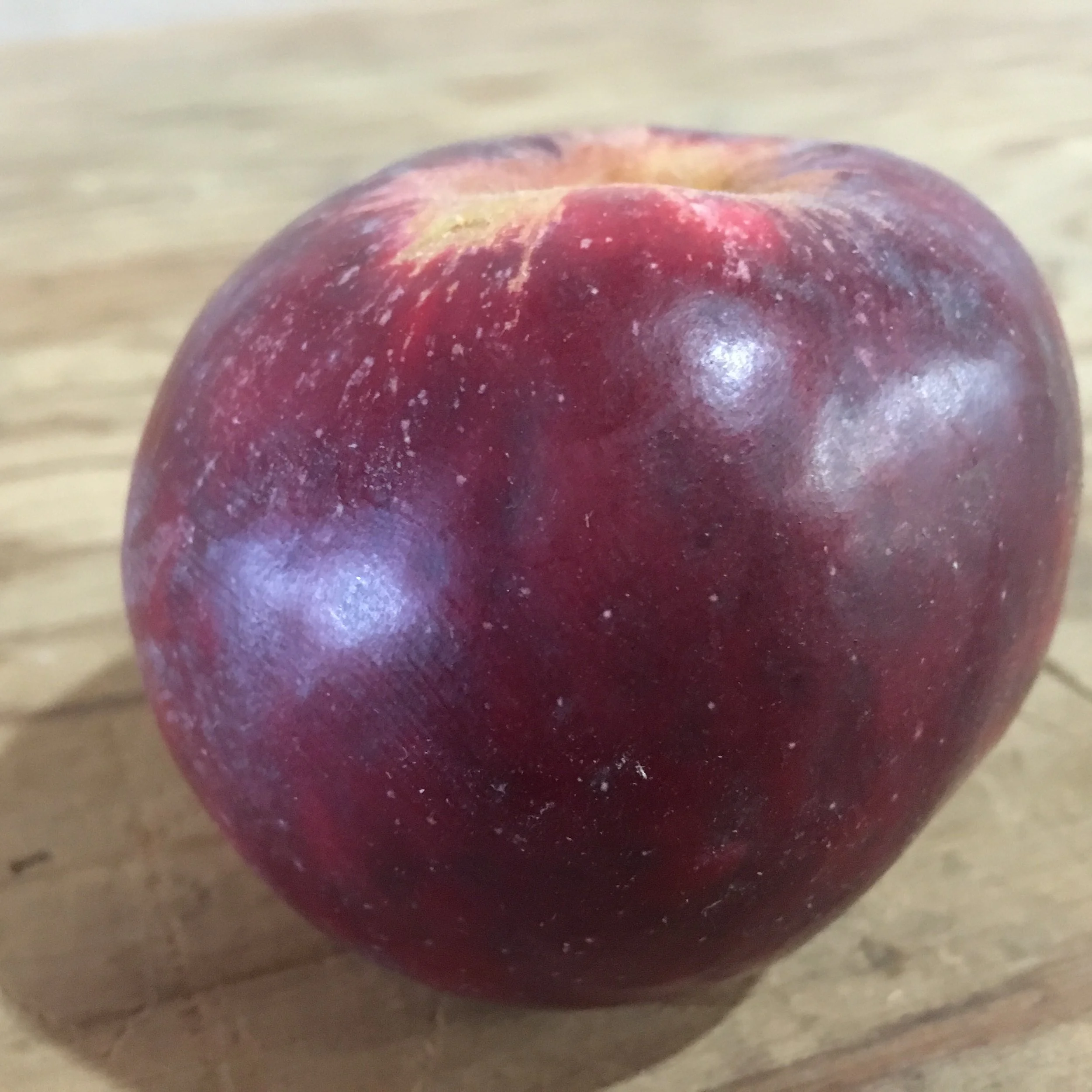
Devonshire Crimson Queen
These apples are not all this red but we seek out the ones that are. That’s because those like these have red stained flesh inside. A rare British apple that has lovely flavor and ripens over several weeks on the tree for a nice long harvest season.

Duchess of Oldenburg
An 18th century Russian apple. It’s wonderful for sauce and drying.
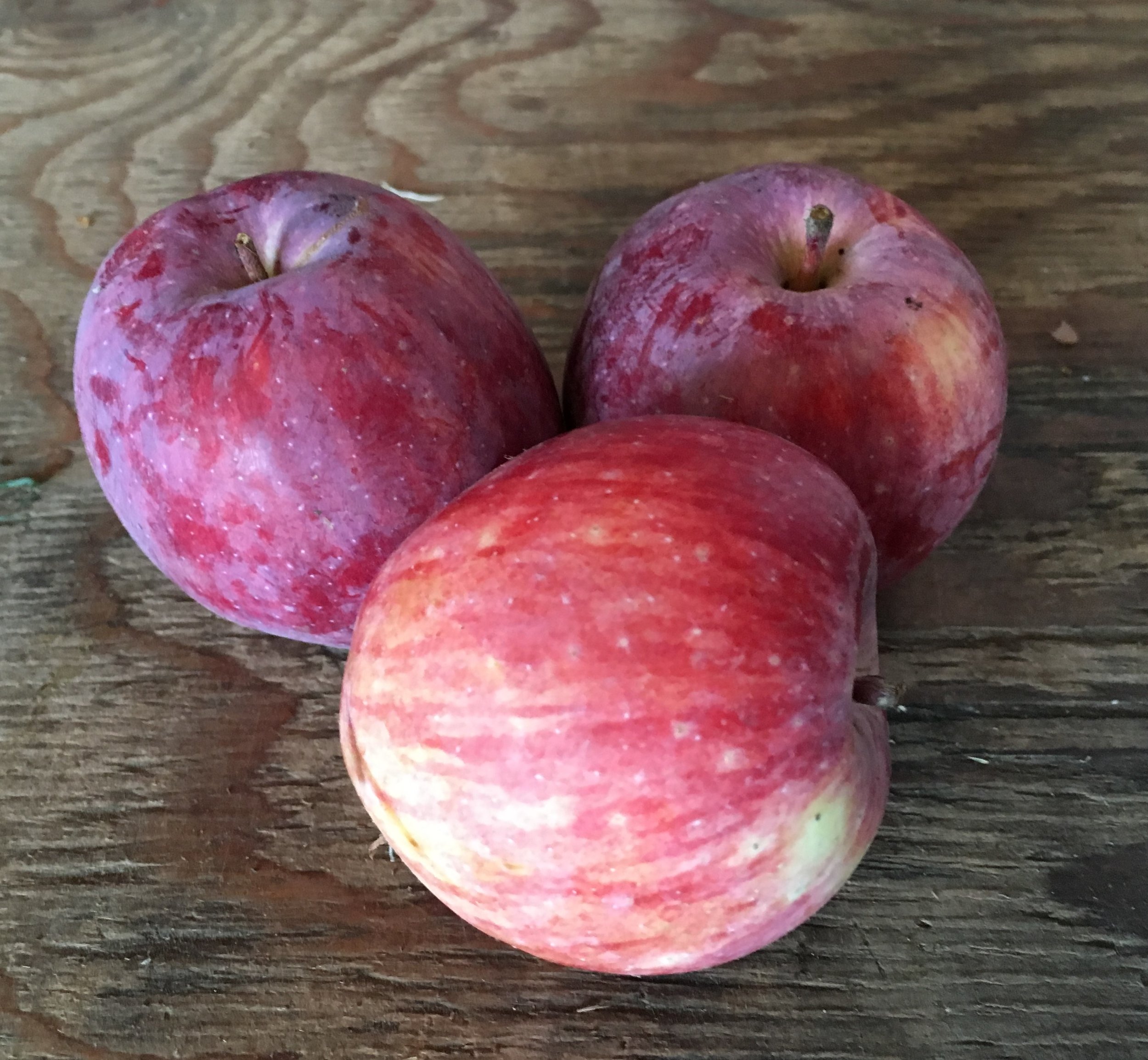
Empire
A great tasting late season apple from the New York Agricultural Development Station in 1945. These sweet and crunchy little apples are favorites for snacking.

Erwin Bauer
These little apples from 1920s Germany are among are very favorites because they’re nearly always perfect, with resistance to diseases of all sorts. They also taste great with a lovely aromatic nature.

Lubsk Queen
This is a Russian variety known for its snow white flesh. It’s great for baking.
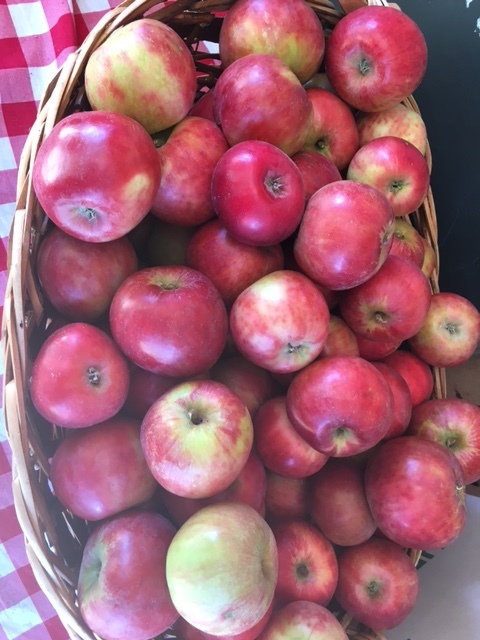
Red Gravenstein
Many of our Gravenstein trees give us apples that are much redder than typical Gravensteins which are mostly green. These tend to be sweeter and a little later to ripen that them as well. This Gravenstein sport if seen often in the Silverton to Stayton/Scio area of Oregon.

Karmijn de Sonnaville
The most well-known creation of Piet de Sonnaville and not that old, released in 1949. It’s a child of the Cox Orange Pippin but with a more aromatic nature. One of my absolute favorites. I love almost everything about this apple from is very intense, but yet not too tart, flavor to it’s beautiful heirloom look.

Almata
A favorite among our red fleshed apples because it tastes lovely, tart but with some sweetness and it’s fairly disease resistant. Many red-fleshed apples are either poorly flavored or highly disease prone (or both). These manage to be fairly easy to grow and tasty which is unique among the red-fleshed apples.

Zabergau Reinette
This 1885 German apple has an incredible amount of acidity that is only matched by it’s high sugar content. The combination makes them an amazing apple experience.

Whitney Crab Apple
These tiny apples are so much fun to eat. They are very sweet with a distinct vanilla flavor. When picked a little early they make the perfect pickling apple and in fact are a variety called for in many old pickled apple recipes.

Lady Apples
This apple is at least as old as the 1500s, maybe older. These late season tiny fruits are now often used in holiday decorations. It’s legend that they were used during the 1500s by “ladies of the night” to freshen their breath. It’s also been written that they were carried by upper class women in their dress pockets for snacks.

Queen Bee
This apple we found in our hedgerow and have been propagating. It’s got an amazing honey flavor. It’s somewhat bitter but the honey quality is similar to the flavor of bee pollen - like honey without the sweetness. We’ve made cider with these and the honey flavor remains after fermentation creating a mead like cider.

Knobbed Russet
This ugly apple is one of the most delicious. From 1822 England. This rich, flavorful apple hides the best tasting parts under the knobby bits.

Hauer Pippin
This very late season is a December favorite. It’s from the hills above Santa Clara and is in the Slow Food “Ark of Taste.” When excess rain or heat damage other apples these apples stay beautiful.

Baldwin
This is an old American variety from the 1750s and Massachusetts. These are dependable, late season apples with great rich flavor and crunch. The keep well for months and make a great hard cider.

Dummelow's Seedling
These are so rare, and information so scarce, that we’re not sure they really are Dumelow’s Seedling. That said, they are in two places in our orchard, planted at two different times, with actual metal labels and the apples are the same so we’re calling them this. The oddest shaped apple we have they are different from the start. The blooms are without pedals, the tiny baby apples are shaped like hour glasses. The flavor of these varies widely season to season but at their best they are delicate and floral.

Jonagold
A somewhat modern apple, 1968, from the Geneva, New York, breeding program. These popular apples are a nice balance of sweet and tart. They keep reasonably well and are a great lunch box apple.

King
This old New Jersey variety from the 1800s is on many Willamette Valley Homesteads. These have a hint of spice that makes them taste like apple pie. Their natural waxy skin helps them keep longer.

Newton Pippin
From Newtown, Queens, New York in 1720. This is another one that experts advise waiting to eat. Thomas Jefferson planted these in Monticello in 1778 and had so much success with them that he eventually had 170 trees. These are loved for baking, fresh eating and hard cider.

Redfree
A, sort of, modern apple that was introduced in 1981. Nicely round apples, bright red over green and naturally shiny. One of the nicest early apples for fresh eating. Crunchy, juicy and friendly.













































